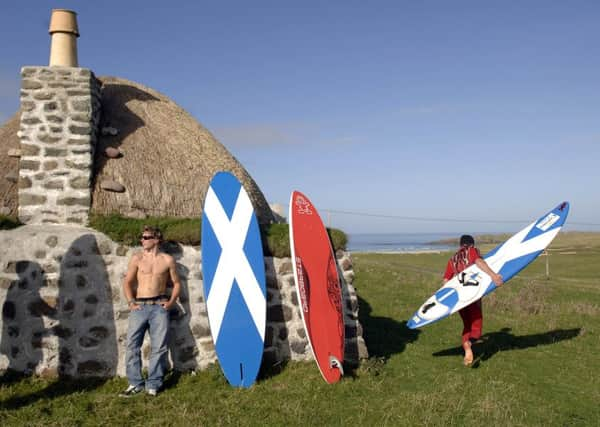Roger Cox: Young surfers earn seal of approval on windswept Tiree


During the summer months, if the weather’s sunny and still, you’ll be warm enough in a T-shirt; if it’s sunny and blowing more than about 20mph, though, you’ll need to dress as if it’s the middle of winter. (Unless, of course, you’ve worked out all the angles, and have managed to find yourself a rare sheltered spot to bask in, in which case you’ll need to dress like an Arctic explorer on the way there, then break out the beachwear when you arrive.)
And if the wind plays a big part in the lives of civilians, for the island’s small but significant surfing population it’s more-or-less a deity; certainly an authority that must be obeyed. If it’s blowing from the north, chances are any waves at south-facing Balephuil will be worth a look; if it’s from the east, then the tricky-to-get-to Maze over on the west coast will be a good place to try; and if it’s howling from the west, and if the swell’s big enough, it’s sometimes even possible to get a nice little peeler at south-east facing Crossapol, where – on a clear day – you can enjoy the surreal experience of paddling out towards the mountains of Mull and the mainland in order to catch waves that have travelled in from the open ocean to the west, then wrapped themselves half way around the island to get to you.
Advertisement
Hide AdAdvertisement
Hide AdAll these spots can deliver great surf on the right day, but the most popular of them all is Balevullin – a crescent of coarse, purplish-white sand in the island’s far north-western corner. Here, a solid west swell fanned by an offshore wind, can produce the kind of waves that stick in the memory for years, so on a dreich Tuesday in late June, with an 8-foot/11 second interval swell lumping in from the west and a 28mph wind blowing from the south-east, it was no surprise to see the car park above the beach busy with cars and vans, even though it wasn’t exactly what your average bucket-and-spader would describe as “beach weather”.
Out in the middle of the bay, two black dots bobbed side by side, then started paddling quickly for the horizon as a series of thick, dark bands of swell marched in out of deep water, hollowed out as they reached the edge of the sandbar and then broke with a crack and a rumble, spray pouring from their crests like smoke from a steam train.
I scrambled into my wetsuit, grabbed my board and picked my way out through the swirling shorebreak, aiming a little to the left of the dots. As I drew closer I recognised them as locals Ben Larg, who won the under-14s at the Scottish Surfing Championships this year, aged just 11, and Finn MacDonald, who won the under-18s aged 15.
The last time I’d seen Ben was four years previously, on a sunny day at Balephuil. Back then, his dad, Marti, had been teaching him the basics in small, fun-sized waves, but today Ben was the one giving the masterclass. As I paddled hard to get safely over the top of a heaving 8-footer I glanced over my right shoulder and saw Ben leap effortlessly to his feet just beneath the lip of the wave, drop smoothly down its face and then come rocketing towards me as his fins converted lateral motion into down-the-line speed. The wave would have been well overhead for me, but on Ben – who isn’t tall for his age – it looked positively Hawaiian. He wasn’t fazed by it though – in fact, he and Finn were clearly having a blast, hooting with excitement each time another good set rolled in and the horizon turned black.
That’s not to say they weren’t looking out for each other; after Ben took another late drop and failed to re-appear again on the inside I found myself anxiously scanning the whitewater for any sign of a head breaking the surface and noticed Finn, sitting a few yards away, doing the same. Only when Ben had popped up with a grin and started paddling back out did Finn turn his attention back to what was happening out to sea.
After a few more waves, the pair headed in, Finn carving strong, spray-flinging turns all the way to the inside on his final ride, and I was left alone with only an inquisitive seal for company. “That,” I said to the seal, pointing in the direction of the beach, “was the future of Scottish surfing.”
The seal looked at me for a moment, cocked its head a little to one side as if to say “Pfft, yeah, tell me something I don’t know,” and disappeared with a splash of its flippers.